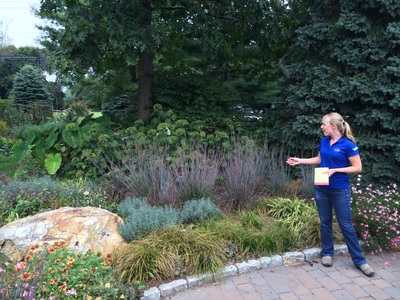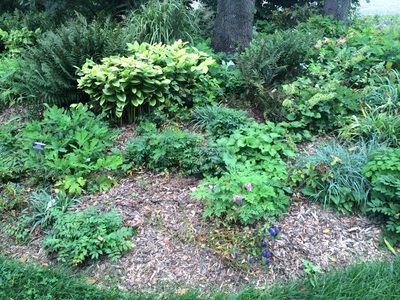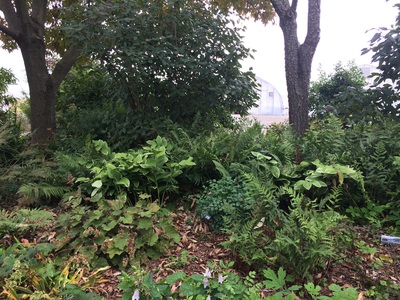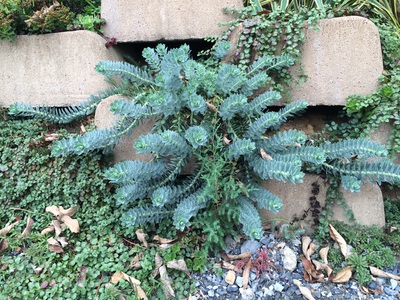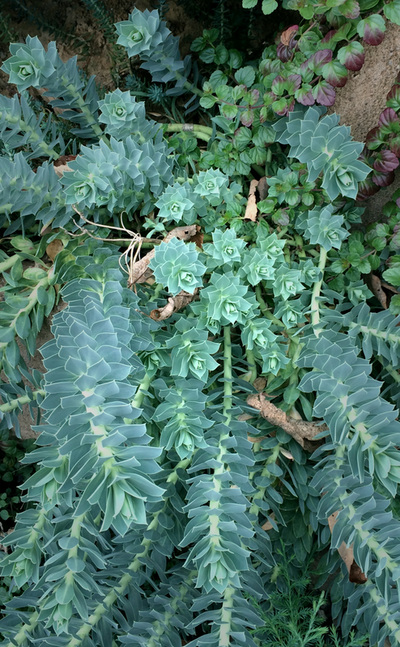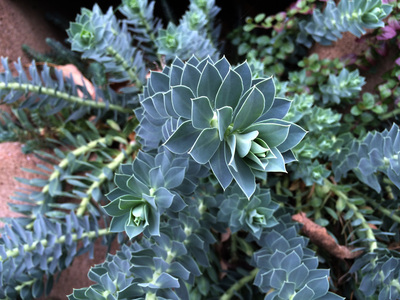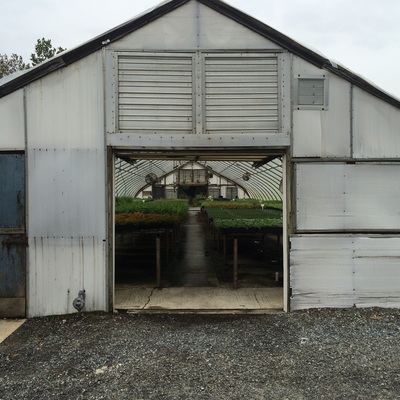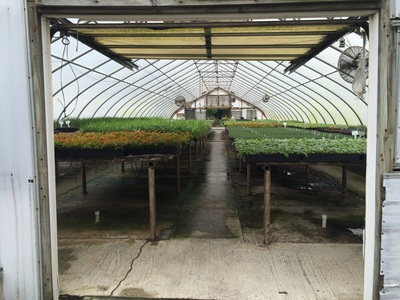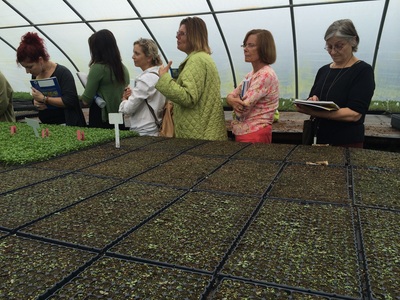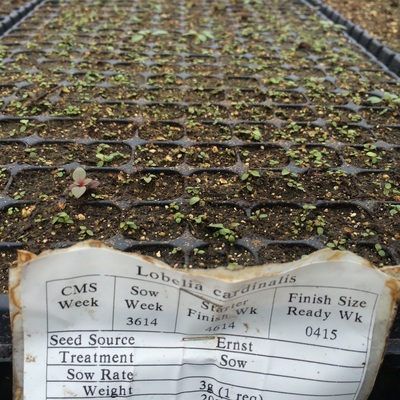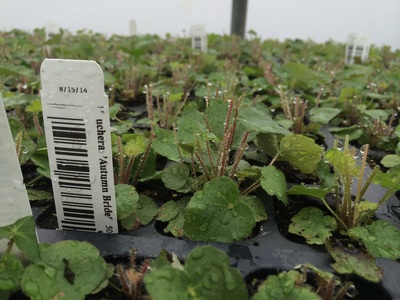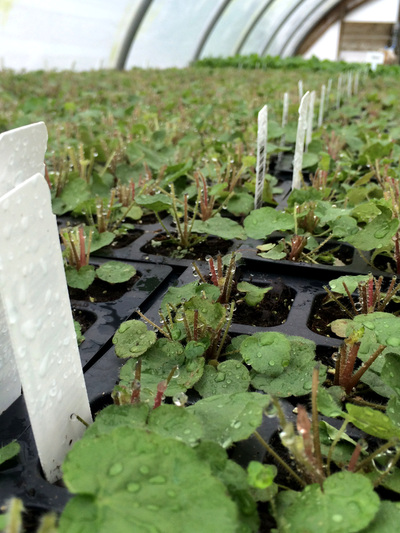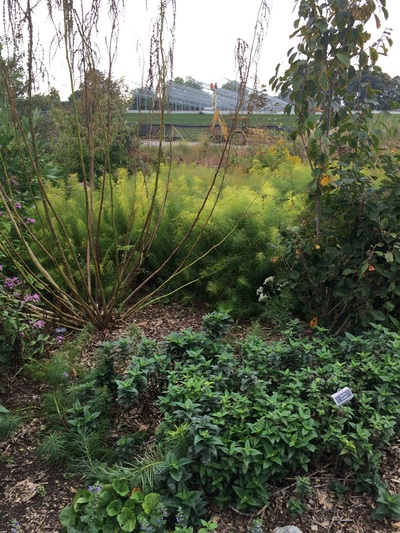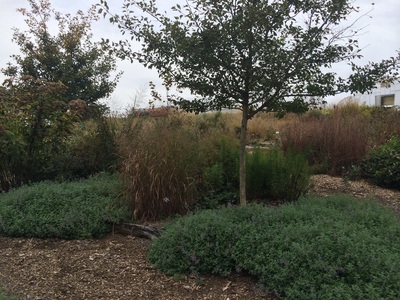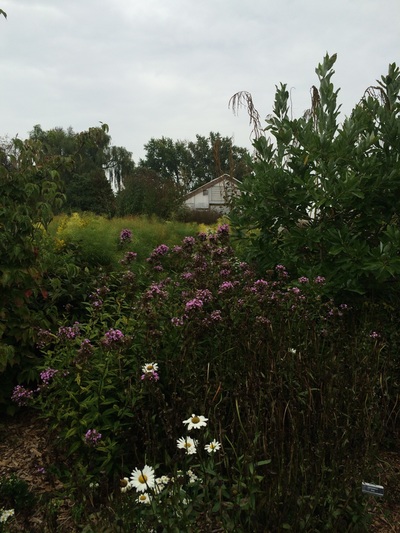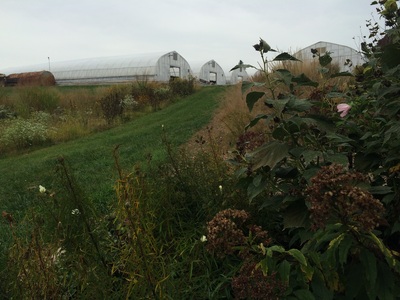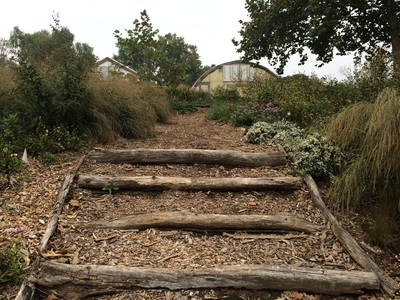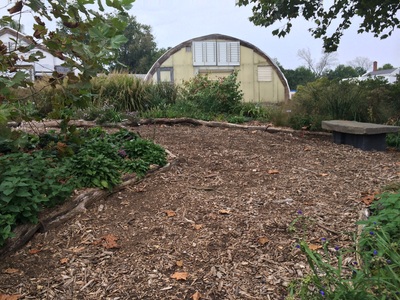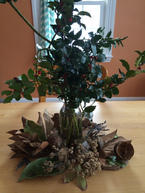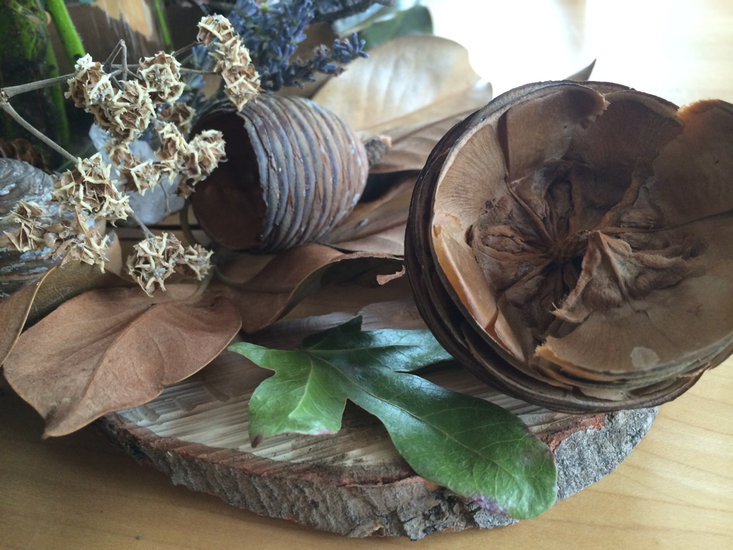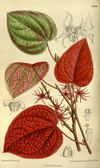(September 29, 2014) We visited North Creek Nurseries where their corporate offices sit in Landenberg, Pennsylvania on a drizzly afternoon in late September. Claudia West, their Ecological Sales Manager, gave us a little tour around their facilities. She knows a lot and I wish I could follow her around for a couple of days, at least. I was really excited to learn that North Creek discovered Schizachyrium scoparium 'Standing Ovation' (Little bluestem) because I planted several this year and it is a favorite. They were in the process of constructing several huge new greenhouses while we were there. Massive. Especially in contrast to their existing structures. I also really liked the paths in the (naturalized?) garden at the bottom of the property. And the way greenhouses subtly peek above the varied plant life. Of course I have much more to say about each photo I decided to post, but I needed to get them up here before the external hard drive forgot about them
The thing about being an outsider, no matter what, is that there's a good part, which is that it teaches you to hear what people are thinking M. Nichols
I’ve spent too many hours trying to explain the impact a certain plant has on its surroundings. Hopefully the fact that Dirr claims it “worthy of the discriminating gardener’s attention” validates my fairly unsuccessful attempt to explain the significance of Disanthus cercidifolius. Highlighted by its incredible fall color and subtle structure in the winter landscape, I first noticed this deciduous shrub that sits deep in the woods on the edge of Chester County several years ago but started observing more closely this past October.
My parents planted theirs in 1997 after cutting down two sick hollies that I don’t remember at all. The tall slender branches caught my attention maybe two years ago in a desperate attempt for fresh air. I put Christmas lights on the kousa that sits a few yards away just as an excuse to get outside. It was the first time putting lights on any tree (outside) and I had already wrapped at least two strands before realizing the effect I wanted from the lights - a less organic but ornamental feeling. If I had wrapped a few branches of the disanthus, it could have looked like an upside down christmas tree which seemed ironic considering the task at hand. The bare branches provide a sculptural interest especially against a snowy background. It stands at least 12’ tall and maybe 10’ across at its widest point. The Disanthus cercidifolius leaves are my favorite aspect of this plant: usually 2” to 3.5”, alternate and simple with a welcoming round heart shape and a colors ranging from purple to red to orange and yellow. They find a way to protrude into the sky even though they only stand no higher than twelve feet in the air. During the spring and summer months the leaves have a tinge of blue or purple that you only really notice up close. The reddish purples make the dark red color in the ‘Autumn’ sedum cultivars pop while the remaining touches of green create a connection with what grows nearby. If you desire distinct fall color and have rich soil in a fairly shaded area and you should consider Disanthus cercidifolius even if Dirr’s description seems discouraging. He writes that it is not the easiest plant to grow as it needs acidic soil, wind protection, and appreciates shade more than sun. It is fairly slow growing and doesn’t need pruning but can tolerate it if necessary. I would definitely give it its own space to shine in a location you easily see everyday. It provides interest all year round but really claims it space in the fall landscape and it feels like a surprise each year as the summer comes to an end. |
Archives
January 2017
Visit
The Author |
